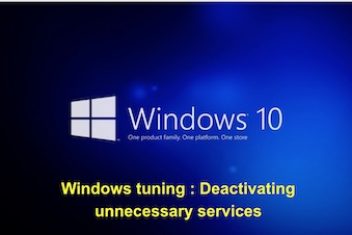By Leon Edmunds – Technology has indeed impacted everything around us. It has transformed our day-to-day activities to be more convenient than they used to be. From marketing to transportation, it has changed the way we live forever. Whether we think it broughtmore benefits than harms to us, we cannot deny its effect even in the current education system.
Ever since the rise of the internet and computers, the teaching-learning process has changed from its traditional methods. Gone are the days when cellphones are discouraged for classroom use. Nowadays, schools maximize the available technologies to adapt to the current trends and students’ learning styles. This enables the students to develop essential skills they will apply in the future. Besides this, below are some of the ways on how technology has changed education.
Students have more active engagement with their learning materials.
In the past, students heavily relied on textbooks, pictures, and discussions to learn. While they are helpful in many ways, they may not be sufficient to achieve holistic learning. It is because they cannot interact with their materials or use their other senses to gain experience. But through modern technologies, students can now further develop their knowledge and skills by hands-on learning. They can now use equipment, such as computers, microscopes, and virtual and augmented reality devices. By using them in the academic context, they can be more participative and interested in the lesson, leading to learning.
Read: How Computers Help Students in Their Studies
Moreover, current technologies have made it more convenient for students to compose their academic writings. They can use online dictionaries to look for definitions and visit online libraries to gather resources. Also, they can maximize free grammar and plagiarism checkers to improve their work. This way, their experience becomes more in-depth and authentic.
Real-world issues can be integrated and discussed in the classroom.
One significant effect of the evolution of technology in the classroom is the openness to use and discuss current real-world problems. Education is not meant to pour out information alone, but it should also open the students’ eyes to the world’s societal issues. Because they are the next generation of leaders and educators, they must learn how to deal with these problems in the present and future.
This has become possible through the implementation of technology in classrooms. If the students have a question about the teacher’s lesson, they can use the internet to look for information that can satisfy their curiosity. Furthermore, they can use it to read current news that may have a direct or indirect effect on them. If they want to share their concerns regarding what they have read, they can talk to their teachers. Then, their teachers can discuss your concerns with the rest of the class. This way, they will understand and empathize with real people’s real problems.
Simulation and modeling brought by modern technologies help students learn effectively
As John Dewey says, students learn better by doing or by being engaged in their learning materials. As mentioned earlier, technology has allowed more innovations to be used in the classroom setting, making the concept of learning-by-doing more possible. This is seen through the use of simulations and 3D (or even 4D) models. They have become another evidence of the usefulness of technology in education.
Read: 6 Interactive Presentation Software for Greater Student Engagement
Teachers use specific simulation tools to show planetary movements, tornado developments, and plant growth. These help the students visualize significant scientific processes instead of relying on their imagination. Moreover, teachers and students can also use particular applications on tablets or iPads, which creates a better learning experience. Some apps allow them to view different human body parts, which is especially helpful for students taking science or medicine tracks. Using QR codes in classrooms creates easy accessibility to the study materials and other files for both students and teachers, it also provides convenience in communication . These things would not be possible if not for technology.
Discussions, debate boards, and forums within the academic context have become global
Modern education is not confined to the four walls of the classroom anymore. Because of the internet, both teachers and students can interact and discuss with others anywhere around the world. They can now create and participate in online groups, forums, and debate boards. This allows them to learn and understand various views and insights that would not be known in the classroom alone. By reading other people’s thoughts, they can reflect on their own opinions.
Moreover, they get to strengthen their critical thinking and social skills by debating or communicating with others. Because they get to talk with people with various insights, they can develop their critical thinking skills by giving appropriate rebuttals. Also, they form friendships by conversing with other people online, thus extending their social and communication skills. Indeed, there is so much learning that can be achieved outside of the classroom as well.
Coaching students has become easier for teachers
Instead of being the sole source of information, teachers have become facilitators of learning or coaches for the students. This might be one of the most significant technological impacts on education. Teachers are not meant to deliver information like how it was done in the past. But with the help of technology, the students can have a more holistic learning experience with teachers as their guides.
Nowadays, teachers provide activities incorporating technology that makes the students learn with or without supervision. Then, they give feedback and coach the students if necessary. This will aid them in developing the essential skills further by becoming independent. Moreover, they can do online consultations through video conferences if needed. Or, they can send emails to coordinate their insights, and the teacher can reply as soon as possible. They do not need to meet face-to-face to discuss crucial matters; they can just communicate online.
Read: Why business education is a good option for high school students
Indeed, it is fascinating how technology has changed society, especially in the field of education. It has provided an avenue for more holistic and authentic learning that engages the students to participate. Furthermore, everything they have learned and experienced will benefit them in the future. Lastly, technology has made it possible for them to discuss real-world problems and talk to different people worldwide. Because of it, students now have a bigger and more exciting classroom — the world.
Leon Edmunds
Leon Edmunds began work in 2006. Since then, he has tried his hand at SEO and team communication management. He also writes for blogs and works as an academic writer at EduJungles, a professional essay writing service. His main interests are content marketing, communication skills development and blogging. Every day he is looking for new ideas to help people achieve their career goals. His team is working as one ideal vehicle. Facebook, Instagram.
If you like the content, we would appreciate your support by buying us a coffee. Thank you so much for your visit and support.



